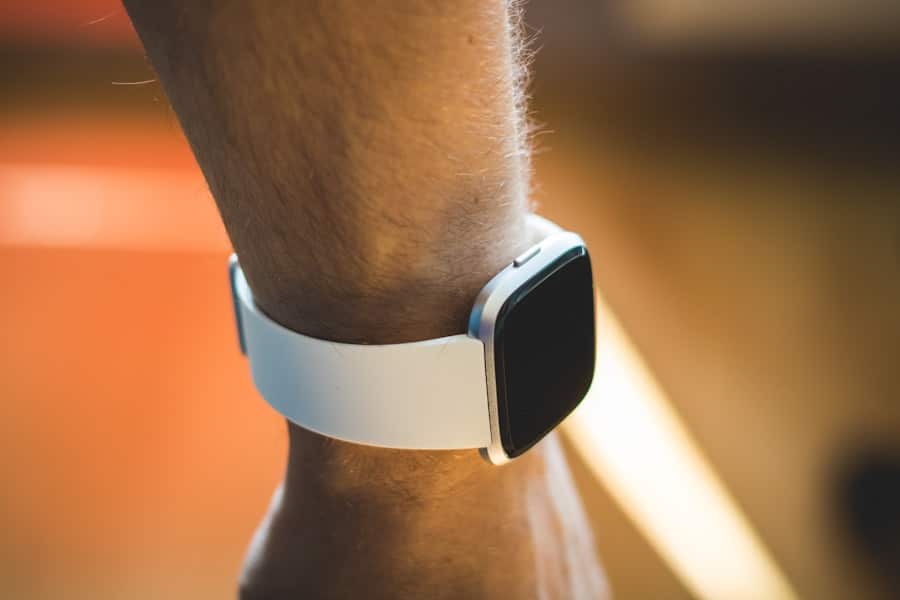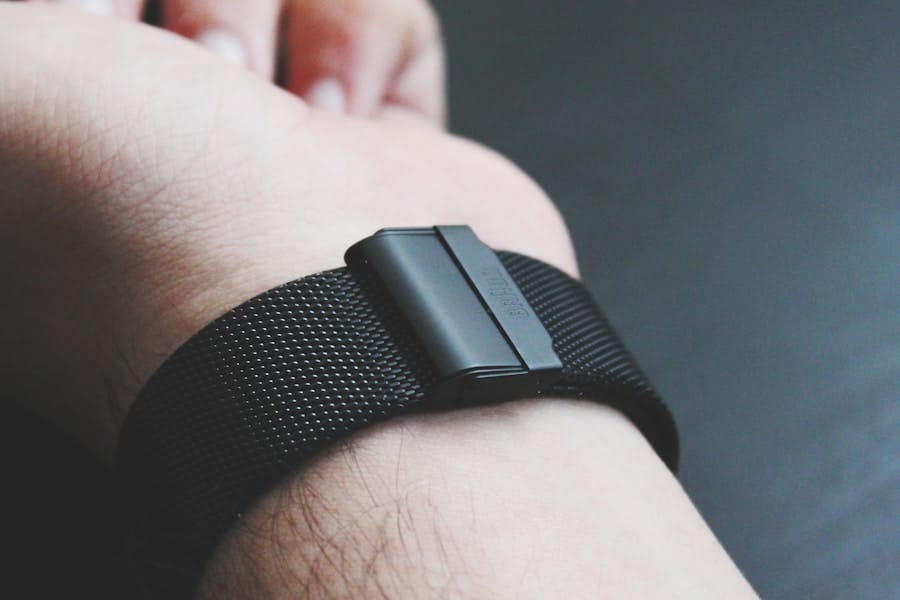Wearable health devices have emerged as a transformative force in the realm of personal health management, revolutionizing how individuals monitor their well-being and engage with healthcare systems. These devices, which include smartwatches, fitness trackers, and specialized medical wearables, are designed to be worn on the body, providing real-time data about various health metrics. The proliferation of these technologies has been fueled by advancements in sensor technology, mobile computing, and data analytics, making it possible for users to track their health in unprecedented ways.
As a result, wearable health devices have become integral to preventive healthcare, enabling users to take proactive steps toward maintaining their health. The appeal of wearable health devices lies not only in their convenience but also in their ability to empower users with actionable insights. By continuously collecting data on vital signs, physical activity, and other health indicators, these devices facilitate a more informed approach to personal health management.
This shift from reactive to proactive healthcare is particularly significant in an era where chronic diseases are on the rise and healthcare costs continue to escalate. As individuals become more engaged in their health journeys, the potential for improved outcomes increases, making wearable health devices a critical component of modern healthcare.
Key Takeaways
- Wearable health devices are becoming increasingly popular for monitoring vital signs, improving fitness and wellness, and managing chronic conditions.
- Advancements in wearable health technology have led to more accurate and reliable devices that can be integrated into healthcare systems.
- These devices can monitor vital signs such as heart rate, blood pressure, and oxygen levels, providing valuable data for healthcare professionals.
- Wearable devices can also help individuals improve their fitness and wellness by tracking activity levels, sleep patterns, and calorie intake.
- The future of wearable health devices holds promise for further advancements in accuracy, reliability, and integration into healthcare systems, potentially revolutionizing the way we manage our health.
Advancements in Wearable Health Technology
The landscape of wearable health technology has evolved dramatically over the past decade, driven by rapid advancements in various fields such as miniaturization of sensors, battery technology, and artificial intelligence.
For instance, devices like the Apple Watch Series 7 and Fitbit Charge 5 incorporate advanced sensors that provide users with comprehensive insights into their cardiovascular health.
These innovations not only enhance the accuracy of the data collected but also expand the range of health metrics that can be monitored. Moreover, the integration of artificial intelligence and machine learning algorithms into wearable devices has further enhanced their capabilities. These technologies enable wearables to analyze data patterns over time, offering personalized recommendations based on individual health trends.
For example, some devices can detect irregular heart rhythms and alert users to potential atrial fibrillation, a condition that can lead to serious complications if left untreated. This level of sophistication marks a significant leap forward in wearable technology, transforming simple fitness trackers into powerful health monitoring tools that can potentially save lives.
Monitoring Vital Signs with Wearable Devices
One of the most significant applications of wearable health devices is the continuous monitoring of vital signs. Traditional methods of monitoring vital signs often require clinical visits or specialized equipment; however, wearables have democratized access to this critical information. Devices such as smartwatches and fitness bands are now capable of tracking heart rate, respiratory rate, and even skin temperature in real-time.
This capability allows users to gain insights into their physiological state throughout the day, providing a more comprehensive picture of their health. For instance, the Oura Ring is a notable example of a wearable device that excels in monitoring vital signs. It tracks heart rate variability, sleep patterns, and body temperature fluctuations, offering users valuable insights into their overall wellness.
By analyzing this data over time, users can identify trends that may indicate underlying health issues or changes in their physical condition. Furthermore, the ability to monitor vital signs continuously empowers users to make informed decisions about their lifestyle choices, such as adjusting exercise routines or seeking medical advice when necessary.
Improving Fitness and Wellness with Wearable Devices
Wearable health devices have also played a pivotal role in enhancing fitness and wellness among users. By providing real-time feedback on physical activity levels and encouraging users to set and achieve fitness goals, these devices foster a culture of accountability and motivation. Many wearables come equipped with features such as step counters, calorie trackers, and workout summaries that help users stay engaged with their fitness journeys.
The gamification of fitness through challenges and rewards has proven effective in motivating individuals to adopt healthier lifestyles. For example, platforms like Fitbit offer community challenges where users can compete with friends or family members to achieve specific fitness milestones. This social aspect not only makes exercising more enjoyable but also creates a support system that encourages individuals to stay committed to their fitness goals.
Additionally, many wearables now include guided workouts and personalized training plans tailored to individual fitness levels and preferences.
Managing Chronic Conditions with Wearable Devices
The potential for wearable health devices to assist in managing chronic conditions is one of the most promising aspects of this technology. Conditions such as diabetes, hypertension, and heart disease require continuous monitoring and management to prevent complications. Wearable devices equipped with specialized sensors can provide real-time data that helps individuals manage these conditions more effectively.
For instance, continuous glucose monitors (CGMs) allow individuals with diabetes to track their blood sugar levels throughout the day without the need for frequent finger pricks. Moreover, wearables can facilitate better communication between patients and healthcare providers. Data collected from these devices can be shared with medical professionals in real-time, allowing for timely interventions when necessary.
For example, a patient with hypertension can use a smartwatch that monitors blood pressure levels and alerts them if readings exceed safe thresholds. This proactive approach not only enhances patient safety but also reduces the burden on healthcare systems by minimizing emergency interventions.
Integrating Wearable Devices into Healthcare Systems
Enhancing Clinical Decision-Making with Wearable Data
The data generated by wearables can enhance clinical decision-making by providing healthcare providers with valuable insights into patients’ daily lives and health behaviors. This information can lead to more personalized treatment plans and improved patient outcomes. For instance, remote patient monitoring programs that utilize wearable devices allow healthcare providers to track patients’ progress outside of traditional clinical settings.
Data Privacy and Security Concerns
However, integrating wearable technology into healthcare systems also raises concerns regarding data privacy and security. The sensitive nature of health data necessitates robust security measures to protect against unauthorized access and breaches.
Standardizing Data Sharing Protocols
Additionally, there is a need for standardized protocols for data sharing between wearable devices and electronic health records (EHRs) to ensure seamless integration into clinical workflows. Addressing these challenges will be crucial for maximizing the potential benefits of wearable health technology within healthcare systems.
Ensuring Accuracy and Reliability of Wearable Health Devices
As wearable health devices become increasingly relied upon for monitoring health metrics, ensuring their accuracy and reliability is paramount. The effectiveness of these devices hinges on their ability to provide precise measurements that users can trust. Manufacturers must adhere to rigorous testing standards during the development process to validate the accuracy of sensors and algorithms used in wearables.
For example, clinical trials may be conducted to compare the readings from wearable devices against gold-standard medical equipment. Furthermore, ongoing calibration and software updates are essential for maintaining accuracy over time. Users should be educated on how to properly use their devices to minimize errors in data collection.
For instance, ensuring that heart rate monitors are worn snugly against the skin can significantly improve measurement accuracy. As technology continues to evolve, manufacturers must prioritize transparency regarding the limitations of their devices while also providing users with clear guidelines for optimal usage.
The Future of Wearable Health Devices
Looking ahead, the future of wearable health devices appears promising as technological advancements continue to reshape the landscape of personal health management. Innovations such as augmented reality (AR) and virtual reality (VR) may soon find applications in wearables, enhancing user experiences by providing immersive training environments or interactive health education tools. Additionally, advancements in biosensors could lead to the development of wearables capable of monitoring an even broader range of physiological parameters.
Moreover, as artificial intelligence becomes more sophisticated, we can expect wearables to offer increasingly personalized insights tailored to individual needs and preferences. Predictive analytics may enable wearables to anticipate potential health issues before they arise based on historical data patterns. This proactive approach could revolutionize preventive healthcare by allowing individuals to take preemptive actions based on real-time insights.
In conclusion, wearable health devices are poised to play an increasingly vital role in shaping the future of healthcare by empowering individuals with knowledge about their health while facilitating better communication between patients and providers. As technology continues to advance and integration challenges are addressed, we can anticipate a future where wearable devices become indispensable tools for promoting wellness and managing chronic conditions effectively.
If you are interested in wearable health devices that actually work, you may also want to check out the article on the Samsung Galaxy S22 which explores the possibilities of this innovative smartphone. This article discusses how the Samsung Galaxy S22 can be used to track health metrics and improve overall well-being. It is a great companion to the advancements in wearable health technology mentioned in the original article.
FAQs
What are wearable health devices?
Wearable health devices are electronic devices that are worn on the body to monitor and track health-related data such as heart rate, physical activity, sleep patterns, and more.
How do wearable health devices work?
Wearable health devices typically use sensors to collect data from the body, which is then processed and analyzed by the device’s software. The data is often displayed on a companion app or sent to a cloud-based platform for further analysis.
What are some examples of wearable health devices?
Examples of wearable health devices include fitness trackers, smartwatches with health monitoring features, smart clothing with embedded sensors, and medical devices such as continuous glucose monitors and ECG monitors.
What are the benefits of using wearable health devices?
Wearable health devices can help individuals track their physical activity, monitor their health metrics, and provide insights into their overall well-being. They can also be used to detect potential health issues and encourage behavior change towards a healthier lifestyle.
Are wearable health devices accurate?
The accuracy of wearable health devices can vary depending on the specific device and the metrics being measured. Many devices undergo rigorous testing to ensure their accuracy, but it’s important for users to understand the limitations of each device and its measurements.
How are wearable health devices expected to evolve by 2025?
By 2025, wearable health devices are expected to become more advanced, with improved sensors, longer battery life, and enhanced data analysis capabilities. They may also integrate with other technologies such as artificial intelligence and telemedicine for more comprehensive health monitoring and management.



